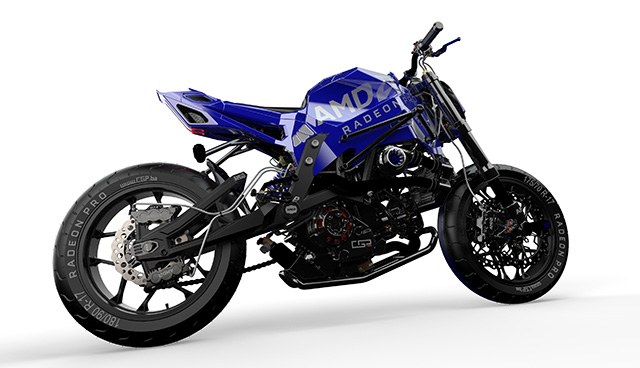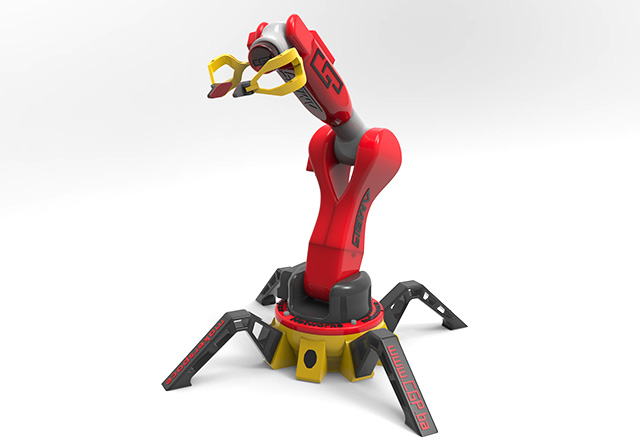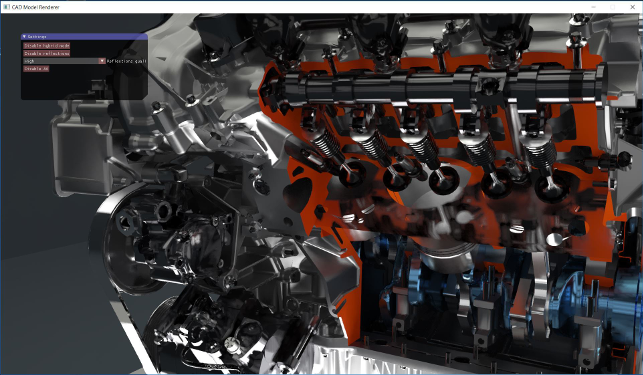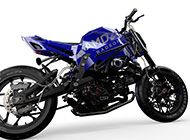
CGP Design’s teaches free courses to help students learn CATIA and SolidWorks, creating exciting concepts like this snowmobile
It can be hard to master the latest CAD software when you live in a country in which even student editions can cost a week’s wages of a professional engineer, and the hardware to run it is nigh-on unobtainable.
Bosnia, a small state on the Balkan Peninsula, and part of the former Yugoslavia, is hardly awash with funding, and much of its top talent leaves without ever becoming part of the national economy.
“Because the economic situation isn’t good, thousands and thousands of young people are leaving our country to find a better future,” says Adi Pandžić, co-founder of CGP Design.
Based in the capital Sarajevo, CGP Design has the bright and airy look and feel of any other European design studio, but the difference here is its goal to transform the lives of Bosnian students by teaching profitable engineering skills like 3D design.
Since its inception in 2014 its team of freelance engineers and designers have taught scores of Bosnian and Herzegovinian students how to use SolidWorks and CATIA for free.
“I only started to learn 3D design software in my second year at university,” says Pandžić, who divides his time between the studio, his continuing education as a PhD student and working as a teaching assistant at the University of Sarajevo.
“I learned CATIA first, then switched to SolidWorks, and I’ve now been using it for five or six years.”
The problem that Pandžić faced, and that many Bosnian students still face, is the cost of CAD software: Unless your university course teaches a particular application – Pandžić’s own faculty only taught CATIA – low average local salaries make it very difficult to obtain a software licence for yourself.
“You don’t have the money to buy the commercial version of SolidWorks, and even the student version costs around €140,” he points out.
“My current salary, by the standards of Bosnia, is amazing, and I’m earning around €600 per month.”

CGP Design’s concept motorcycle has made full use of their new AMD-powered rendering abilities
CGP Design – Finding A Solution
Pandžić’s solution, together with two colleagues at the University of Sarajevo, was to found an organisation dedicated to teaching local students how to use CAD tools, but the problems didn’t stop with the software.
“Our biggest problem here is support,” says Pandžić. “We’re fighting to give our students good equipment to work with.”
The classes were originally held at the university itself, but with the help of a Swiss government-funded project, MarketMakers, CGP Design has now moved to a co-working space in central Sarajevo.
Its most widely seen work is a concept design for a sports motorcycle, created by 9 students over a period of 18 months.
When it was posted on GrabCAD’s online engineering community it won the site’s Golden Gear award for best collaborative model and has subsequently been used in the marketing materials of firms including HP, Epic Games and Dassault Systèmes.
However, for a model with over 2,500 individual parts, the asset posed real problems for the hardware on which the CGP Design team was working at the time.
“I had the most powerful machine, and I had to try around 10 times to open that file,” says Pandžić. “After that, I didn’t dare turn off my PC until it finally crashed because it was so hard to open again.”
Similar problems continue, since how CGP Design operates relies on its students working on their own machines.
“They’re always asking to do big projects, and I have to tell them: You don’t have a powerful enough PC to do that.”
The story behind what CGP Design was trying to achieve prompted AMD and workstation partners Armari to donate two new V25 workstations to the students.
Powered by Intel Core i7-6700K CPUs, dual AMD Radeon Pro WX 7100 GPUs and 32GB of system RAM, the new workstations – along with three further Radeon Pro WX Series graphics cards also supplied for the facility’s existing workstations – have unleashed a wave of new projects that were previously unimaginable.

Some of the team at the end of their training

The AMBIS robotic arm – designed and built as a team project and a direct beneficiary of the facility’s new hardware
CGP Design – Unleashing New Skills
The new hardware has also added the benefits of free professional software into the mix, in the shape of Radeon ProRender for SolidWorks, its physically-based render engine.
Pandžić has noticed that the complex assets of the PINKI sports bike render ‘30-40 per cent faster’ than on the CPU alone, and that it remains hardware agnostic.
He’s equally excited by the ability to let his students experience their work in different ways, thanks to the free Game Engine Importer, that transfers SolidWorks assets into Unreal Engine.
“It’s amazing being able to export a 3D model for use in virtual reality,” says Pandžić. “You can do crazy things with it.”
The latest projects to come out of CGP Design includes two fully functional robotic hands, designed in SolidWorks, printed on an Ultimaker 3D printer, then given functionality with Arduino and Internet of Things technology.
Former students have already gone on into careers at Ducati and NASCAR race teams, while Pandžić hopes the skills the studio’s new technologies make available will help form Bosnia’s next generation of engineers and entrepreneurs.
The future of the 3D graphics engine?

Imagine working in 3D CAD and seeing your model in near photorealistic quality at any point in the design process – without leaving your application viewport. This holy grail of 3D graphics could soon become a reality thanks to a new hybrid viewport technology from AMD.
Read the full article

How software availability and upgraded hardware has aided 3D design education
Default






